Major Project Blog
Research and Initial design
For this module I wanted to have a strong portfolio piece and make a game that I have not done before. I wanted to focus on level design as that is the area of game design I am most interested in. My first idea was to create a platformer game similar to how Super Mario odyssey plays. I had the notion of the game involving light and dark elements, either with the story, game mechanics or aesthetic of the game.
_edited.jpg)


In the first weeks of the module, I started blocking out and scripting a small prototype to test the ideas that I had for this light and dark theme. For the platformer idea I thought about the game being about a robot that is an outdated model and so get thrown away into the garbage disposal area of a factory. The light and dark aspect would be the player starting of in a dark area and as they progress upward the levels of the factory the levels would get brighter as they are literally reaching the outside world. With this idea I created a small level to test it out and I did some quick research on platformer games. I read through two research papers one by Toni Minkkinen and another by Adam Gustafsson. These paper gives me a good idea on the history, types of platformer that can be made and what gameplay is expected from them.

I created a quick level block out with this idea in mind, I made some game mechanics based on concepts related to light and dark. So for example a flower that will grow when player takes an orb out of their inventory. After this short prototyping splint, I wasn't too confidant on the platforming aspect. But from brainstorming game mechanics I started to think about creating a puzzle game.


I then quickly moved on to prototyping a puzzle style game based on the orb idea from the last prototype, again I jotted down ideas of game mechanics.



I made a small level and the "light and dark " mechanic which just meant the orb can affect objects in the environment.


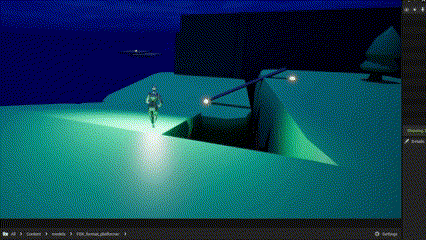

Research


I found books on puzzle games and level design as well as some Youtube videos. I used these two main books but puzzle craft was more relevant to what i need more knowledge on I learned that having checkpoints in a puzzle is really important. "Checkpoints is the process of breaking a puzzle into hierarchical, self-confirming steps" A sudoku puzzle has check points in the numbers it provides for you, giving you hints to solve it.





Puzzle craft talks about these checkpoints and so I wanna to recreate this in my own game, with how and where I place objects and using recognisable 3d models. I used this by making 3d models and blueprints that are present in every level, the orb sits on this pillar and the shadowy cloud is what the player is meant to pass through. Later in development this changes slightly in appearance but do the same job of getting the player hints on how to solve each puzzle. The pillar becomes a floor tile with a yellow circle and the shadowy cloud becomes a gate.


The main takeaway from all my research was from Brett Taylor GDC talk, he created a game called limelight and talks about the concept of human ram. Which means that people can only talk on so much game play mechanics at a time, too little the game is boring and too much the game is too hard. He also explain that as the player spent more time in the game the mechanic they have learned won't talk up as much space in their head as they become familiar with the controls and rules of the game. At this point then more mechanics and information can be given to the player. From these bits of research I got a good understanding of how to effectively communicate and set up puzzles. I knew that I needed to onboard the player gradually, to try and make the mechanics as clear as possible. So when the player is stuck on a puzzle they at least know what possibly might be the solution.

Game research
The Last Guardian
I wanted to have a look at how some other games have made their puzzles, I used the last guardian, cocoon and Mallory and the marble sanctum to see how they onboard their players. The first game I looked at was the last guardian. In the first level the player finds themselves in a small room, the game wants the player to understand that the lever is the key to progressing further. This is drilled into the player as they have to pulled two different levers. They player can't get out of the area without doing this first. I liked this idea of restricting the player to a space in order to help them learn gameplay mechanics as this prevents the player from going pass important onboarding



In my game I made sure that with each puzzle the player can't move past any game mechanic that they need to learn. When they can move on it either because they have learned what they needed from a new mechanic or that they have solved a puzzle. I did this in most instances with a ledge that allowed the player to fall down to a lower level, this is the only time the player can walk off a ledge. Having the restricted movement meant that I can control where the player go and direct visually without making it too obvious us. This lets the player have a sense of achievement .


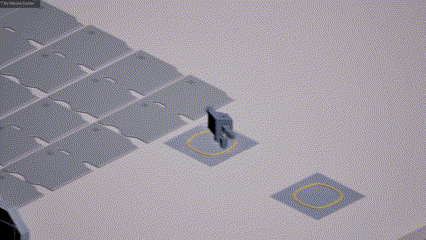
The "Light plate" is another example of this, as the player can only pick and drop the orb while on top of this object. This helps the player to understand what the orb can interact with.
Cocoon
Cocoon helped me a lot with the design choices I made for my Game, similar to the last guardian the game restricts the player by preventing them from walking a ledges and not letting them move forward unless they have solved a puzzle. In the picture below player has to walk down the step, in my game the player can only walk off the blue ledge. This is where I got my idea of controlling where the player can walk off a ledge. I took a a lot of inspiration for my art style in this game as I thought this was easy to replicate and my game has more of a focus on the puzzle rather than the graphics.



Level Design
After I did my research and tested some game ideas with rapid prototyping, my ideas of a platformer turned into a puzzle game. which was based mainly on carrying an orb from the start of the level to the end. I started this idea by prototyping as this helped me understand how the game might work. I learned from the Johnathan Blow's video that while he was making braid he discovered new game mechanics while making his game that he never considered before. I thought that this was good to replicate in the early stages of my game as I wanted to considered all possible puzzle for the game mechanics I was thinking of for my game.
So I started to draw out level designs, until I felt that I had enough puzzles that explored how much could be done with each game mechanic. With each puzzle I tried to think of a reason for having it, for example one level might be to introduce a mechanic to the player, one to reinforce the mechanic and then one to challenge the player. This method of design was based on what I learned from Brett Taylor as I wanted to make sure that players had enough time to become familiar with the mechanics before onboarding them with more.






The result of this was a very systematic level design that was straight forward and took the player from A to B. I did a playtest for this level and the results did let me know that player have enough information to solve each puzzle,


At this point in development I was happy with how my levels had turned out and I had a good idea of how to make the puzzles. One thing that I hadn't put into the level design yet was any exploration. Exploration was one of my game pillars and I felt that this was important to include as it would break up the game from constant puzzle, this decision was also inspired by my research game Cocoon. This would help with the flow of the game and prevent the player from being bombarded with new game mechanics one after the other.

My first round of levels had a "shrine" blueprint that would teleport the player to the next puzzle, in my next design I got rid of this and started connecting each puzzle together. The gave the puzzle a better flow and allowed me to have areas of exploring.
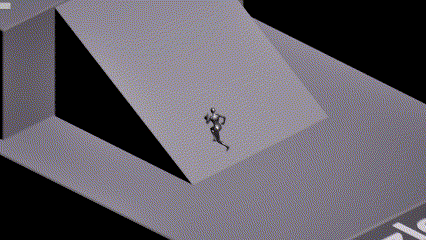

I ended up with a level design that I was more happy with I felt that the puzzle were better connected rather separate.
I then started to feel that the look of the level wasn't good, again one of my game pillars with aesthetic. I looked back on the games I had researched and liked Cocoon's art style. Since I had the levels already design it was just a matter of changing how they looked. I drew out some quick designs to figure what sort of style I wanted then I went into Blender and started to mode them.















At the start I found it difficult to developed any puzzle ideas due to not knowing where to begin. My research helped me out and give me a good idea of how to logically make a puzzle and what I should/shouldn't include. I knew from the Puzzle craft book I needed checkpoints and from Brett Taylor I needed to consider the about of memory space a person can use at a time. However, I did have difficulty when trying to create functional puzzles and making them work in the game. Sometimes an idea that make sense on paper didn't work when in the game. Sometimes this was due to the isometric camera perspective's hiding object from view, while the editor the freeform camera meant that it looked like it worked. During playtesting some player didn't know what do to or mistook an a piece of the environment for an interactable object. For example lights that I placed on the side of the level were mistaken for steps, when they weren't reachable at all.

Game mechanic/ Blueprints
One major flaw that impacted the game was my ability to code, I had a lot of ideas for puzzles and mechanics that I struggled a lot to implement into the game, for example the claw. In the research section I mention Jonathan Blow’s idea of “How can every part of the game be twisted” which is good for a puzzle game as it keeps the player on their toes. This is something that I failed to do due to my lack of skills in blueprints and coding.
Empty Orb (Scrapped)

Pipes
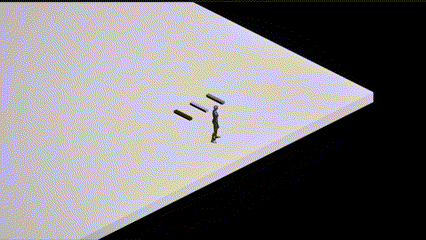
Platforms
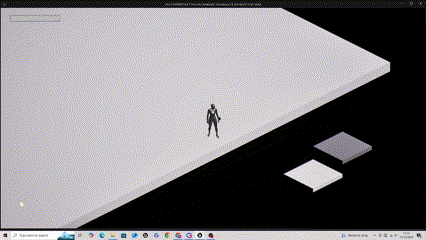
Cubes
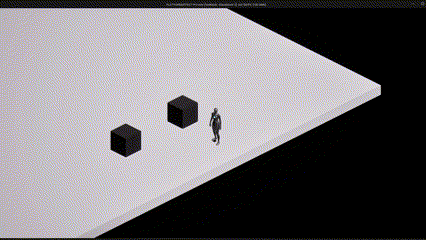
Teleporter

Refection
Overall, I am happy with my project I learned a lot from it. I feel more confident in designing puzzle games. I think my puzzles lacked some depth and I could have done more with my levels. This was due to my lack of skill in coding and blueprints.



